
TRADITIONS
26-06-2020 di Ferdinanda Vigliani

he east coast of Africa.
The boundaries of that linguistic and cultural unity known as Swahili culture range from Mogadishu in the north to Cape Delgado in Mozambique.
A long coastline shared by a single language: the kiswahili, a mixture of Arabic and bantu, whose texts date back to the 12th century.
But a strong visual element, a fashion system that dominates women's clothing, imposes itself in this area in the eyes of the traveller.
It is an explosion of colour, a display of shapes and symbolic elements, a touch of elegance that not even the poorest woman could ever give up: kanga.
The kanga, a simple piece of cotton fabric of about one meter and 75 centimeters per one meter and 25, representing the art, beauty, culture and customs of women on the coast.
Not just a piece of clothing. Much, much more.
Among the Swahili on the East Coast of Africa, tradition has it that when a man marries for the first time, he sends a gift to his girlfriend a sanduku, that is a hood containing all the bride's clothing, from clothes to the most delicate lingerie. It also includes various objects for the home and, for the wealthy, also gold jewellery and modern electrical appliances. But the liking of a sanduku, no matter how rich, is always tied to how many pairs of kanga it contains.
We have said "pairs". Yes, because kanganakes always go in pairs and so they are worn by women, while men can occasionally and in the domestic walls, bring a piece of kanga only tied around life.
While I was in Zanzibar, a local newspaper reported an interview with the famous percussionist Fatma bint Baraka, popularly known as Bi Kidude.
Bi Kidude's drum (which like the swords of heroes in chivalric poems has a name: Mson-do) cannot be played if it is not tied to life with a kanga.
A rope or belt would not be as good. It is a matter of delicacy, grace and softness that according to Bi Kidude can only be achieved with a kanga.
Kanga colors always have a special meaning.
For example, during the menstrual cycle, women preferably wear kanga red and black.
Especially in the past, when a great deal of confidentiality also dominated marital relations, this was a message for her husband: when a woman is in red, one cannot hope for her favours.
The red and black kanga is usually donated also to the young woman who has had her first menstruation or to a woman who has just given birth, while the bride is given a kanga with a special design with small crosses and rosettes, called Kisutu, symbol of her entrance into adulthood. Kisutu kanga has three colours: white, black and blood red. Colours that in tradition have a meaning: red is a witness to the virginity of the bride, black represents the pain of defloration, white is the color of the male seed that the girl experiences for the first time. For marriages, the women of both families, the bride and groom, often choose a single design, as an informal uniform to wear during the celebrations, to solidify the unity of the two families. On a market, I was able to buy one that was clearly intended for the mother of a bride, who besides the well-opening red and white drawings bears the words:"Welcome to our daughter's wedding guests".
The white kanga is worn with the full moon as a symbol of a woman's pure love for her husband. While other brilliantly colored ones are worn with beaded beads belts of intonated color, refined arsenal of feminine charm.
In Zanzibar, kanga is used as nightwear by both women and men, and the fabric impregnated with an exciting sweet scent acts as an aphrodisiac that intensifies intimacy. A man who, coming home from work, finds his room full of rose essence with two kanga roses resting on the bed and smelling jasmine, immediately understands that his wife is particularly affectionate and expansive. A kanga with a message like' Karibu wangu muhibu wangu', which means' Bentornato Treasure', seems to have prodigious effects in raising a man's morale and making him feel like a king.
The ways of wearing the kanga vary from place to place. On the continental coast, women wear a pair of kanga lines over their normal habit: one around their waist, the other casually thrown on their shoulders. Among the Sukuma tribes of Shinyanga, the kanga is also worn by men, over shirt and trousers and is worn by passing it under an arm, while the two ends are tied on the other shoulder. When a man is so dressed, people know that he is married. As for us, the faith in the left annular, in Shinyanga the kanga is a sign of status, symbol of the prestige that marriage confers on a man.
The kanga is considered to be really indispensable and divided into three groups: the couple to go to bed, the pair for prayer, which is intended for that only use and must always be clean, and the third pair used as a apron in the kitchen and for work.
A certain kanga is used from the day a child was born. It's tradition to wrap the new born in a pair of kanga not yet cut. This wishes prosperity, strength and beauty to the child.
It also bears witness to the fact that the little one is loved.
Kanganakes are not only used on happy occasions.
Among Muslims when someone dies, the body is washed and covered by kanga. Six pairs or even more are required for this function. An opportunity to show the highest respect, as well as the fact that the best pair is used for the funeral.
After this use, the pair is normally donated to a mosque where the women who attend it use it during prayer. In this way, the two kangaanga become a kind of memory of the deceased and a blessing that with prayer reaches him.
When a woman is divorced, she receives a kanga couple from her husband's relatives as a gift, where she is washed to mark the end of her marital relationship. She for her part will leave her husband a couple of kanga kanga as a good omen for him to get married soon.
Without counting its functional uses of wrapping and carrying children on the mother's back, such as an apron, nightgown and shawl, a kanga tells us immediately if the wearer is happy or sad. The widows, during and after the funeral, cover the head and the entire body, leaving only the face and hands outdoors. A mother who has lost her baby, keeps a kanga tied tightly on her stomach, showing that at that particular moment she is suffering the same penis she suffered during the labour of childbirth. In fact, kanga has a corset function for the woman who has recently given birth.
For 40 days she is tied tightly around the abdomen, so that the uterus, after widening, returns to its normal size, while the woman finds her line.
During ceremonies, women bind the kanga around their chest, use them as turbans and make many practical uses.
This is the only occasion in which Zanzibar's women also wear them outside the home, using them as shawls to cover themselves during traditional ceremonies. The very young people attending the Koranic school will cover themselves with kanga to observe the maximum modesty and composure while sitting on crossed legs on the school carpets.
Recently, the way in which kanga is worn has taken on a wide variety of shapes and styles.
Sometimes they are made up as clothes, trousers, tunic, sometimes they are sewn in the form of' Boubous', according to the style of West Africa, which can be very attractive. It all depends on the wishes of the wearer. The kanga fashion system is versatile and tends to be culturally pervasive and the greater ease of communication today has contributed to its spread even in African countries far from the Swahili coast.
But what is the story of kanga? The prestige, emotions and traditions that accompany it have an interesting historical background.
The most popular clothing before its introduction was the kaniki, a black cotton cloth that had roughly the same size as the kanga. But then came the Portuguese, who spread the use of two pieces of fabric worn as a coat and scarf for the head. These two pieces were called Weight or Lese. In Kenya the word injured is still used instead of kanga. A little at a time these victims invaded the market and finally came together to form a design with four sides. Six square pieces formed a kanga. The word' Kanga' is derived from the name of an animal, the guinea fowl, which in Swahili is called kanga. This was because at a certain point handkerchiefs arrived with a design that resembled a pharaoh. A little at a time the word that was harmed disappeared and the word kanga remained.
With the spread of goblet, also known as marekani, the kanga was printed on this fabric using a single dye for the whole piece. Special wooden moulds were sculpted and tinted in colour before being pressed onto the fabric, thus forming the first simple drawings. Several forms were experimented before taking on the present one: once the kanga had no edges. In the islands this model was known as' Mkunuto' and in Tabora as' Mohamed Abeid'. Then two edges were introduced on the shorter sides, leaving the main theme (mji) in the middle and on the other two sides. The design was then modified to the current shape, with the edge on all four sides.
This began at the beginning of the 18th century. The measures and style of the kanga we see today are therefore about three centuries old.
On the East Coast of Africa, with its important Islamic and Arabic influence, many inhabitants knew how to read and write the Swahili language in Arabic characters already in very ancient times: the first documents found by scholars date back to the twelfth century.
Then, around the middle of the 19th century, the missionaries began to write the kiswahili in Latin characters, which, either for reasons of cultural colonialism or for their greater ease, quickly prevailed over Arabic. Among the people of Costa, illiteracy was therefore relatively infrequent even in the past, and this explains the great fortune of the messages written on the kanga, since the times when they were drawn and printed in two colours. Swahili culture loves very much the motto of spirit, the epigram, the proverb, the phrase well chosen, the appropriate word on the occasion. Here the word can even be worn. A revenge for women, which the traditional culture wants accustomed to silence and privacy.
In colonial times, the kanga was printed in England with Winston Churchill's slogans destined to conquer the female electorate. But when English kanga was flooding the market, Tanganyika women preferred to import their kanga from China and India. The clothes they were wearing thus became a symbol of the struggle for independence. Today, the government and various institutions use kanga for information campaigns such as' malaria ni hatari' to alert the public to the dangers of malaria. They are also used for policy, public health, education and agriculture campaigns.
The different types of kanga give off their special magic in the relationship between the main theme, colour, words and drawing. And then there is the relationship between the donor and the woman who receives the gift to complicate things a lot. Certainly the messages printed on the kanga: verses, proverbs, ironic expressions, epigrams or affectionate words play an important role in the value of the gift. The mother is like a queen "says the message about a kanga I bought in Zanzibar. The dominant colours are red, black and pink. The design is floral, wide, wide, relaxed and conveys a sense of satisfaction and happiness. A very appropriate gift for a woman who has just had a child.
But the messages are not always so positive. Sometimes they can also be very pungent. This is a story I heard told in Tanzania: Mwatumu, a beautiful girl from Dar-es-Salaam was going around with her husband from Mtumwa, who was very jealous. On the occasion of a wedding party, Mtumwa wore a pair of kanga kanga with a warning message intended for his rival:' Nyuki mkali kwa asali yake', which means' The bee ferociously defends its honey'. But it's by chance, on the same occasion, Mwatumu - who knows how the cunning was able to know the message of Mtumwa - wore a pair of kanga kanga that said' Na tule asali tumwache nyuki na ukali wake', a replica in Mtumwa that means' we taste honey and leave the bee its sting'. Neither of the two women could not have directly accused the other of triggering a squabble. It is an unwritten law that adorning itself with a kanga with appropriate messages is a right of every woman: interpretations are then left to those directly concerned.
If, for example, a woman is not in good terms with her mother-in-law, she may not want to face the older woman directly. Then you can circumvent the obstacle with a kanga saying' Sema usemayo mitaani ni wangu ninae ndani', which means literally' You can say and do what you like, but it is I who have it in my bed'. Or an even more open message,' Mama mume nimemkuta baoni na kuku mweupe mkononi', even says that her mother-in-law used witchcraft to separate her from her husband.
Kanga with special messages for newlyweds are chosen as good wishes. An example is a message that says "Nitunze nipendeze waigao wasiweze",' treat me affectionately if you want me to feed you'. There are messages for unfaithful partners, such as' Utamaliza mabucha nyama ni ile ile ile ile', which means' You have travelled around all butchers, but the meat has the same taste'. While a little less crude says:' Tukae tuishi wazhi wazuri haweshi', that if the couple live in harmony a new beauty is born every day. On another one we read' Mke wa nyumbani ni mwaganza wa chumbani': in one house the wife is like the light on in the bedroom.
In short, the kanga can express love, jealousy, hatred, rivalry and many other things. A noisy neighbor, for example, can be accurately informed' Nilidhani jirani kumbe fisadi mtaani':' I believed I was a good neighbour, while you're nothing but a destroyer'. Or' Jirani mbaya mbaya usimuonee haia':' a bad neighbour deserves no respect'. In any case, a very accurate choice is always made: no matter how much you like the drawing, if the message is not correct, you will refrain from wearing it.
Here are some of the most frequent messages found on the Kanga.
USHMWINGILIE ALIYOPEWA KAPEWA KAPEWA
(Do not harass me: what is mine is mine, what is yours is yours.
MAZOEA YANA TAABU TABOOS ZIKILINGANA
(We know too much: if you're far away I'm not well)
BORA FURAHA KULIKO KARAKA
(Better happy than unhappy)
KARIBUNI WAUNGWANA NNA HARUSI YA MWANA
(Good distinguished guests at my daughter's wedding)
NAMSHUKURU MANANI KUNIPATHY MWANDANS NAMSHUKURU MANANI MWANDANS
(Thanks to God who gave me my love)
UNAJIFANYA MPAMBE LAKINI MENGI YANAKUSHINDA
(Heavers of knowing everything and you don't know anything)
BAHATI YANGU YA YA BATA SIKUZOEA KUPATA
(Don't disturb my luck by trying to throw my eye away.
WEMA HAUOZI
(Awareness for good action)
ASIEJUA SIRIYANGU ASYNICHUNGUZE CORNHA YANGU
(To you don't know my life and leave me in peace)
MAMA NI MALKIA THAMANI THAMANI YAKE NI YA PEKEE
(Mother is a queen of priceless quality superior to everything)
USISHINDANE NA WENYE BAHATI
(Do not try to take my fortune away - against witchcraft)
HATA UKINICHUKIA KWELI NITAKWAMBIA
(Arbored as much as you want, but I tell you the truth)
WEWE HATA UKINUNA UKINUNA MIMI WASI WASI WASI SINA
(If you are sad for my own cause to me it doesn't matter)
CULTURE
di redazione
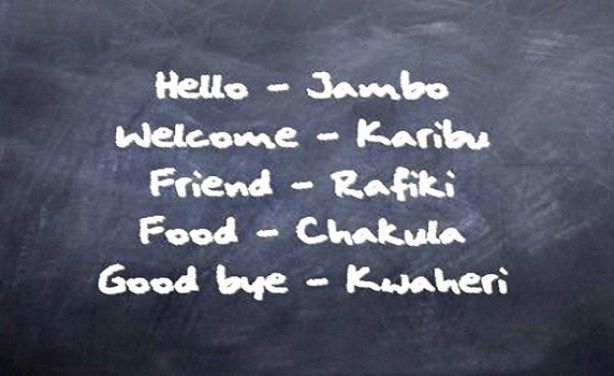
The Kiswahili language, originally from the coast of the same name that goes from the north of Mozambique to the Horn of Africa and later adopted also by the rest of East Africa, particularly by...
CURIOSITY
di redazione
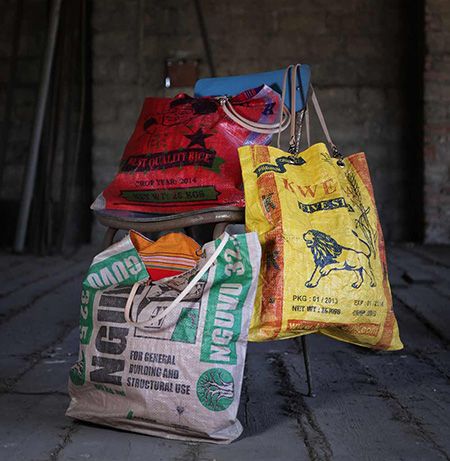
Virgola is one of the most well-known and important Italian brands in the hairdressing arena and its historical founder and owner Rinaldo Rampon is a love of Kenya.
For years he has watched Watamu and his beaches, but not only.
PLACES
di redazione

Thirty kilometres north of Watamu, after the bridge over the mouth of the Sabaki River, where flamingos and hippos can be seen and where the vegetation is particularly luxuriant, lies the village of Mambrui.
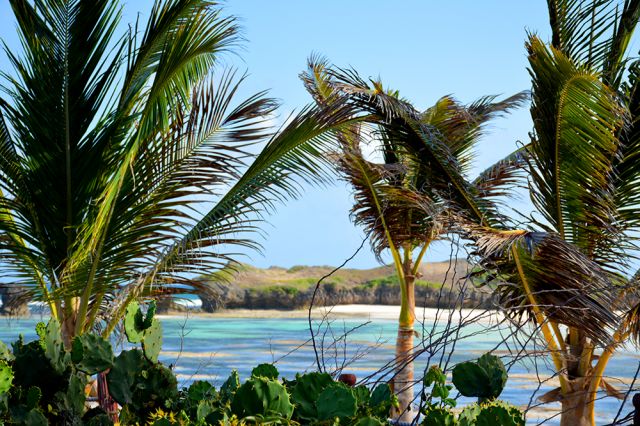
The beauty of nature around Watamu is the first calling card of this wonderful resort in Kenya.
Twenty kilometres before Malindi, arriving from Mombasa and Kilifi, after the...
PLACES
di redazione
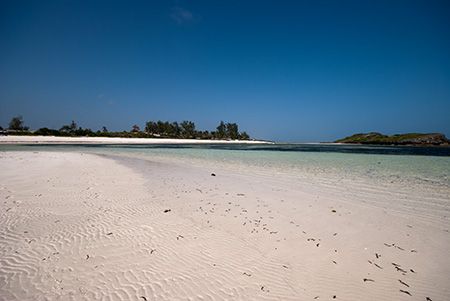
The beauty of nature around Watamu is the first calling card of this wonderful Kenyan resort.
Twenty kilometers before Malindi, arriving from Mombasa and Kilifi, after the villages of Chumani and Matsangoni, you meet...
di redazione

In Watamu there is a place that is absolutely worth visiting and where you can spend at...
PLACES
di redazione
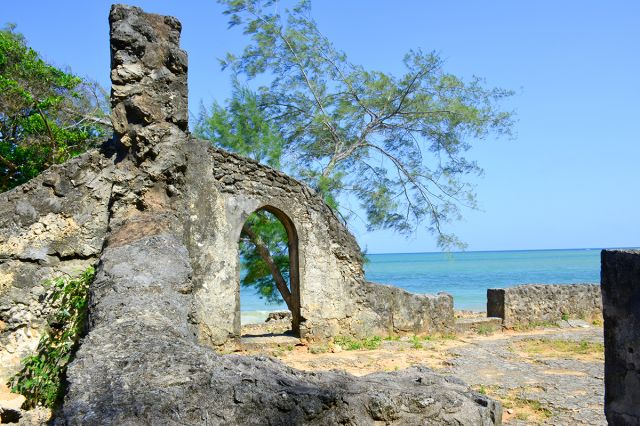
It was called "Jumba La Mtwana", where "jumba" in kiswahili means "home".
It was an Arabic citadel built in the 13th century AD on the banks of the Indian Ocean, not far from the cove of today's Mtwapa, about twenty...
PLACES
di redazione
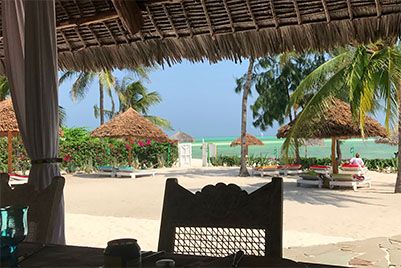
Lunch in one of the most elegant and secluded boutique hotel in Watamu, on the shores of the Bay Jacaranda,
Directly across from the sandy islets of "Sardinia Due" and relax on the beautiful private beach sunbeds?
Or organize an...
RECIPES
di redazione
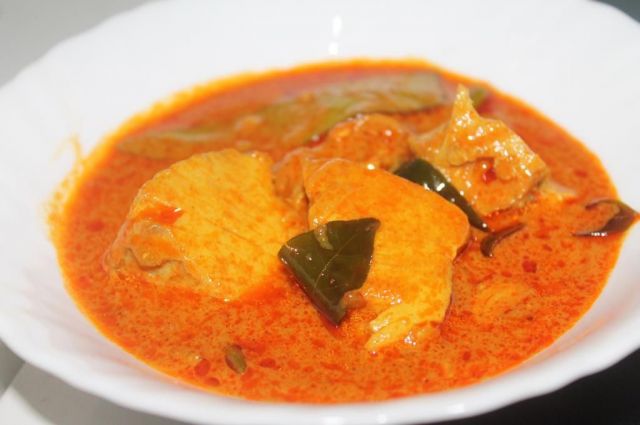
Fish morsels in mango sauce.
This is a Swahili recipe particularly used in Malindi and Watamu and on the coast of Kenya, where the plants of this delicious tropical fruit abound.
Here is for you the recipe of watamukenya.net
TOURISM
di redazione
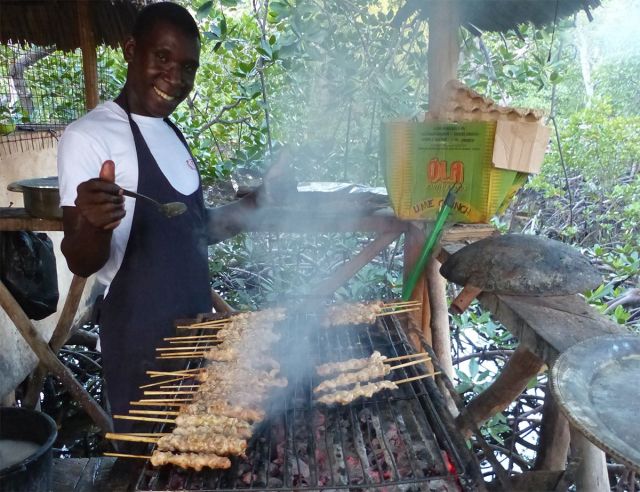
In recent years gastronomic tourism has grown considerably all over the world.
This is due to the popularity of certain programmes and also to the media coverage of dishes and restaurants, especially in social networks.